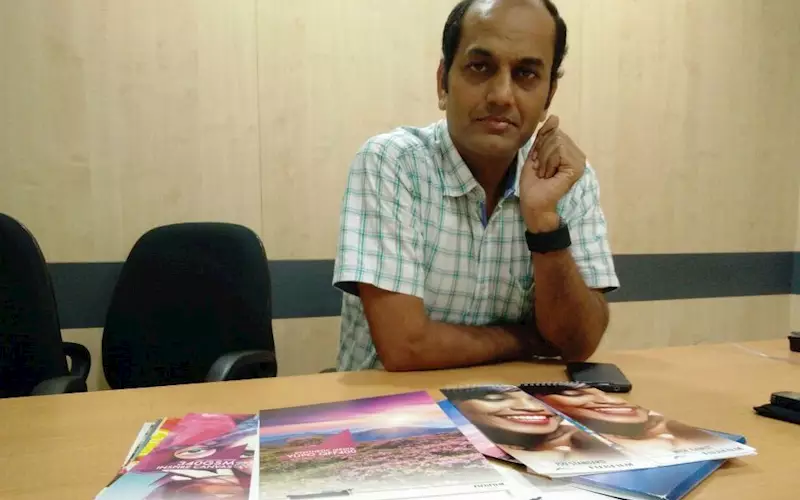Fujifilm aims to double Acuity installation base in India
According to SM Ramprasad, assistant vice president of India operations at Fujifilm, the post-Drupa scenario was “good”. The 2,020 sq/metre Fujifilm booth at Drupa attracted lots of “hot leads from India” for the wide format Acuity series as well as the JetPress.
15 Jul 2016 | By PrintWeek India
Ramprasad is confident that the Acuity installation numbers which is 25 as of June 2016, will be “doubled in the coming months”. He said, “Post Drupa, our order books are full.” The interesting trend is the inroads, Fujifilm has made into Nashik, Sangli, Trichy and Bhilai, as well three installations in Kerala.
Ramprasad felt, this “is an indication of the strength our inks plus the colour quality which is possible on a broad range of print formats and substrates.”
The Acuity Advance Select is useful for sign and screen printers, display printers, packagers and digital printers. It will print both small and large banners, retail advertising and window graphics, backlit displays, pop- and roll-up displays, custom wall coverings, transit graphics, posters, exhibition and event signage, and much more.”
Some of the customer samples that were show to the PrintWeek India team included print jobs which were rendered on flexible and rigid media such as PVC, polycarbonate, styrene, acrylic, paper and board, wood, aluminium composite and many other materials.
Ramprasad stated, “The Acuity Advance Select is available with four to eight colour channels, including white and clear options, with Fujifilm’s Uvijet UV inks. These inks use Fujifilm’s Micro-V ultrafine dispersion technology to maximise pigment loading, while the variable drop-size print heads lay down a thin ink film to minimise production costs.”
Ramprasad was pleasantly surprised with the response to Fujifilm’s Jet Press 720S from Indian visitors. He said, "There are more than 50 hot leads for the B2-plus format single-sided digital inkjet press, for sheets up to 750x532mm." The reason, according to Ramprasad is, the JetPress prints on standard litho papers thanks to an inline coating that reacts with the ink. Plus the quality is better than litho or any other “paper-based digital process”.
“It’s the ultimate quality,” Ramprasad claimed with sample proofs. “I’d say it’s on a level with other digital production machines,” Ramprasad added. “But unlike other B2 presses we are not a beta product. The JetPress has a solid installation base across the world.”
The 8m-long 720S is based on a modified litho press chassis built by Ryobi.
Ramprasad informed PrintWeek India, “The heads are Dimatix Samba piezos in arrays of seven per print bar”. This enables, 200dpi with four droplet sizes to increase the apparent resolution. A revised configuration means replacement (which is rarely needed) is much quicker.
The sheets per hour figure is 2,700 in simplex. The automated consistency and uptime ensure higher productivity and very good uptime, Ramprasad said.
The paper transport has conventional feeder, sidelays, grippers and delivery. A new chain system ‘floats’ the sheet on air from the imaging unit to the dryer, which now has a hot air knife as well as IR. This drying means that reverse sides of duplex jobs can be printed immediately, and completed jobs can go straight to finishing.
The front-end is XMF 6, a new version of Fuji’s APPE-based RIP. It includes the first implementation of Adobe’s Mercury engine, an automatically scaling multi-RIP that enables even complex VDP to be rendered and loaded faster than the press runs.
 |











 See All
See All